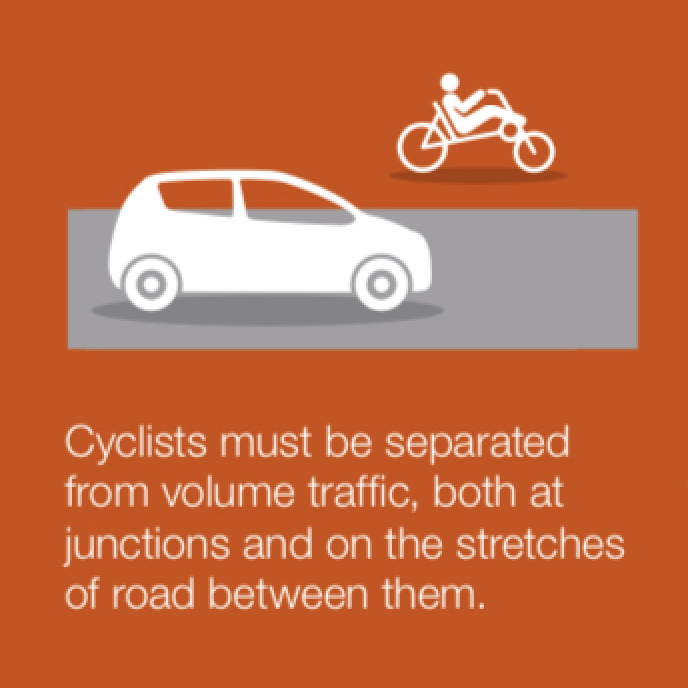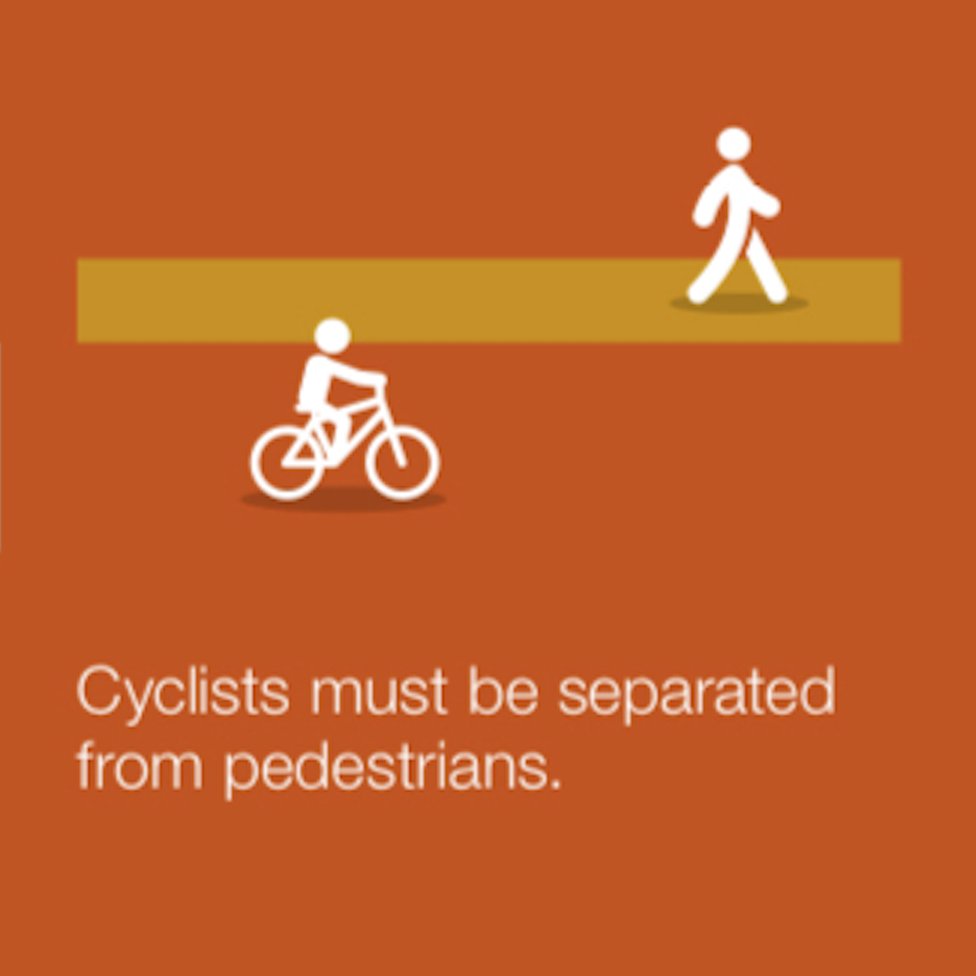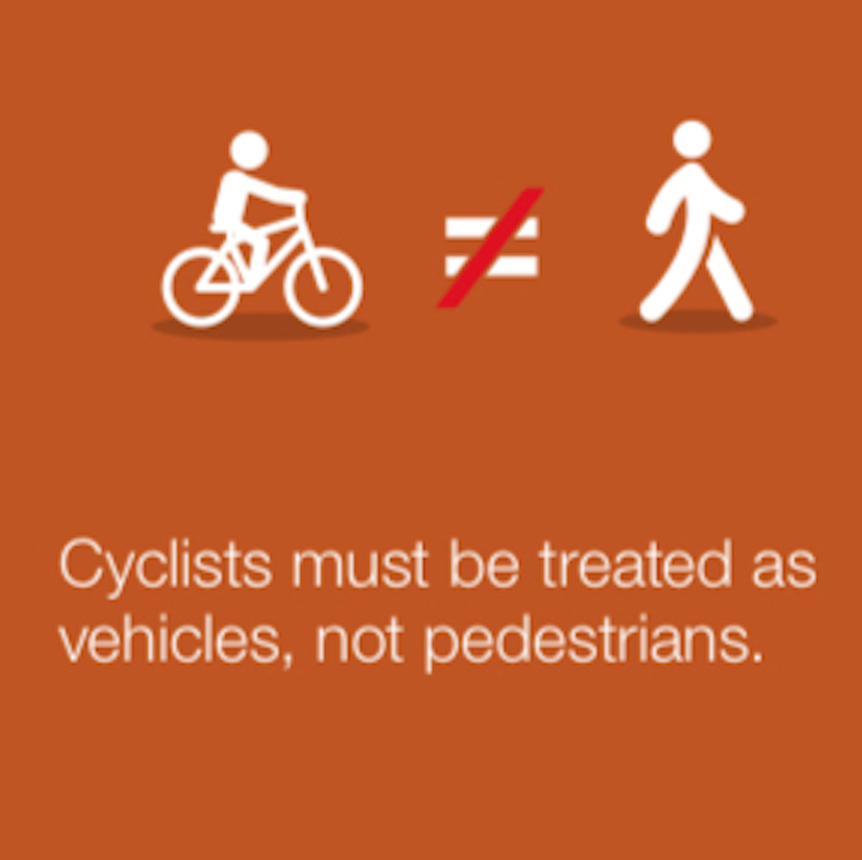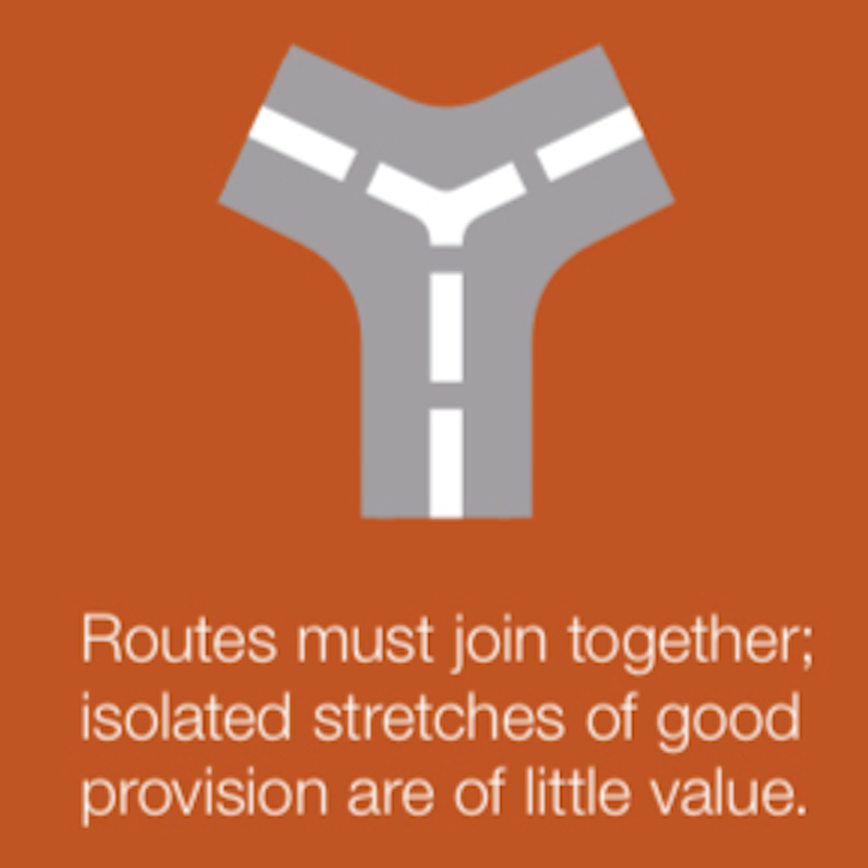There are now nine 'Key Design Principles' for cycle infrastructure - defined by @transportgovuk.
Here's the first one:
"Cyclists must be separated from volume traffic, both at junctions, and on the stretches of road between them."
Here's the first one:
"Cyclists must be separated from volume traffic, both at junctions, and on the stretches of road between them."
Here's the second of @transportgovuk's Key Design Principles for cycling infrastructure:
"Cyclists must be separated from pedestrians".
"Cyclists must be separated from pedestrians".
Number three on @transportgovuk's Key Design Principles:
"Cyclists must be treated as vehicles, not pedestrians."
"Cyclists must be treated as vehicles, not pedestrians."
Another of @transportgovuk's Key Design Principles for cycle infrastructure:
"Routes must join together; isolated stretches of good provision are of little value."
"Routes must join together; isolated stretches of good provision are of little value."
Another of @transportgovuk's Key Design Principles:
"Routes should only be designed by those who have experienced the road on a cycle."
"Routes should only be designed by those who have experienced the road on a cycle."
The next @transportgovuk Key Design Principle:
"Routes must feel direct, logical and be intuitively understandable by all road users."
"Routes must feel direct, logical and be intuitively understandable by all road users."
And other Key Design Principle from @transportgovuk:
"Routes and schemes must take account of how users actually behave."
"Routes and schemes must take account of how users actually behave."
Next up in @transportgovuk's 'Key Design Principles' is a very important one:
"Purely cosmetic alterations should avoided."
What does this mean? Beware mere paint. White lines can help bring clarity for cycle infrastructure, but you can't create safer streets with paint alone.
"Purely cosmetic alterations should avoided."
What does this mean? Beware mere paint. White lines can help bring clarity for cycle infrastructure, but you can't create safer streets with paint alone.

 Read on Twitter
Read on Twitter









